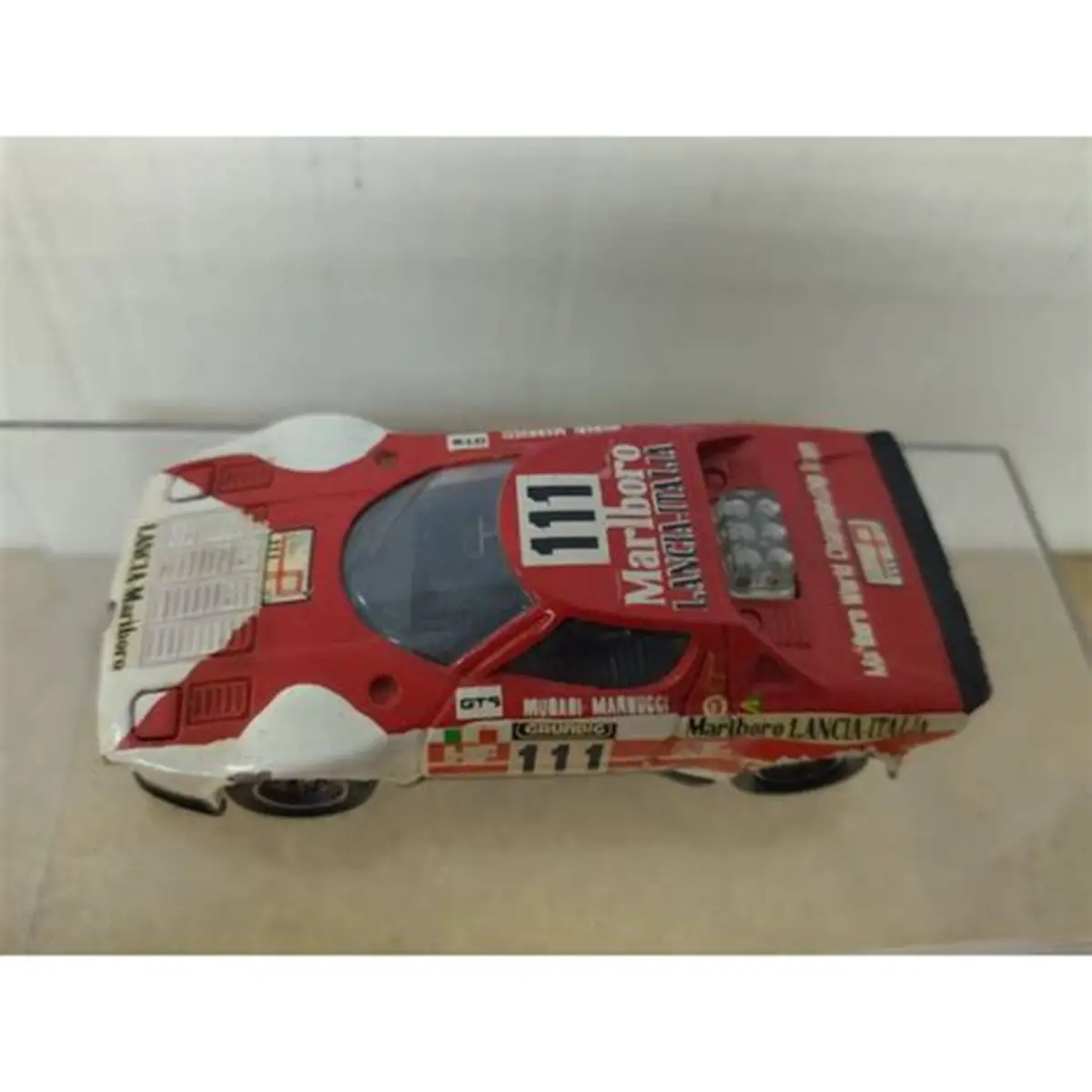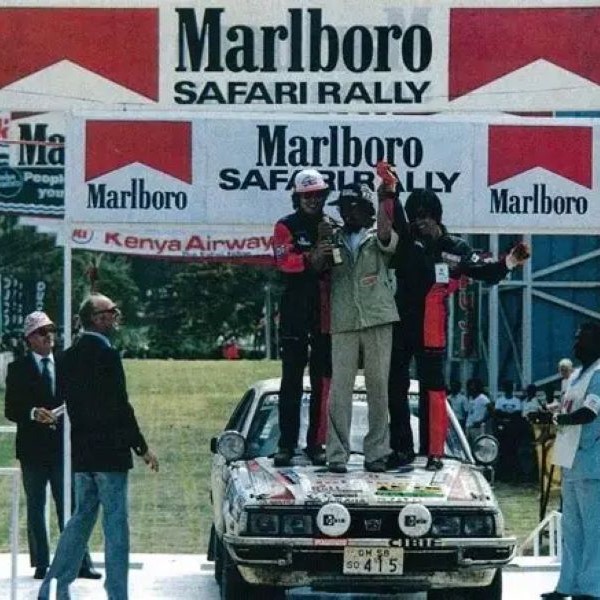The Marlboro rally car is more than just a race vehicle. It represents a bold era when tobacco branding dominated motorsports. Known for its striking red-and-white livery, the Marlboro rally car became a symbol of speed, risk, and global marketing power.
Driven by top teams and legendary pilots, it competed across World Rally Championship (WRC) events in the 1980s and 1990s. Its presence on muddy tracks and snowy mountain passes captured fans’ imaginations. As one of the most recognizable liveries in rally history, the marlboro rally car remains iconic today.
 How Tobacco Sponsorship Shaped Rally Racing in the 20th Century
How Tobacco Sponsorship Shaped Rally Racing in the 20th Century
Tobacco companies like Marlboro poured millions into motorsports. Their goal was visibility and brand loyalty. Rally racing offered unmatched exposure across continents.
Events took place in Europe, Africa, Asia, and South America. Television coverage spread the Marlboro logo worldwide. This was advertising on a global scale.
Sponsorship allowed teams to access better technology. More funding meant improved engines, suspensions, and tires. Performance increased as a result.
Drivers benefited too. Top talents signed with well-funded teams. They received higher salaries and better support crews.
However, controversy followed. Health organizations criticized the normalization of smoking. Ads reached young audiences through exciting races.
Over time, public pressure grew. Governments began banning tobacco ads in sports. The EU enacted strict rules by the early 2000s.
Despite this, the legacy remained. The marlboro rally car stood out as a product of its time. It showed how commerce and competition could merge.
The Role of Philip Morris in Rally Team Development
Philip Morris, the parent company of Marlboro, played a direct role in team operations. It didn’t just write checks. It helped shape team identity and strategy.
They partnered with top manufacturers. Most famously, they backed Mitsubishi and McLaren in different forms of motorsport. In rallying, their support went to privateer teams using Lancia, Audi, and later Mitsubishi vehicles.
Engineers received sponsorship-linked bonuses for podium finishes. This motivated performance at every level.
Philip Morris also managed branding carefully. The red-and-white design was trademarked. It had to appear exactly as approved on every car.
They funded test sessions and wind tunnel research. These were rare luxuries for private teams.
Additionally, they created fan engagement campaigns. Giveaways, posters, and branded merchandise built loyalty.
Their influence extended beyond paint jobs. They helped professionalize smaller teams.
This deep involvement made the marlboro rally car more than a sponsored entry. It was a corporate project on wheels.
 Iconic Models Used as the Marlboro Rally Car
Iconic Models Used as the Marlboro Rally Car
Several cars carried the famous Marlboro livery. One of the most notable was the Mitsubishi Lancer Evolution VI. Modified for Group A and later WRC regulations, it featured turbocharged power and all-wheel drive.
Its compact size and sharp handling suited tight forest stages. Drivers praised its balance and grip. The red-and-white wrap made it instantly recognizable.
Another prominent model was the Lancia Delta HF Integrale. Though not factory-backed by Marlboro, several private entries ran in full Marlboro colors.
The Audi Quattro S1 also appeared in tribute liveries. Fans often associate its aggressive look with the same bold style.
In some regions, modified Subaru Imprezas wore unofficial Marlboro designs. These were common in national championships.
Each version adapted the signature colors differently. Some used full wraps. Others added flame motifs or shadow effects.
While no single “official” marlboro rally car existed after tobacco bans, the visual theme lived on.
These models remain popular in classic rally events and car shows.
Design and Visual Identity of the Marlboro Livery
The Marlboro rally car’s design was simple but powerful. Red and white dominated the bodywork. These colors contrasted sharply against dirt, snow, and green forests.
The large “Marlboro” text wrapped around the sides and hood. Font choice was consistent—bold, uppercase, sans-serif.
White panels broke up the red sections. This created dynamic lines that suggested motion even when parked.
Sponsor decals were placed strategically. Fuel, tire, and oil partners appeared without cluttering the main brand message.
Roof and rear wing often carried smaller logos. The cigarette pack design sometimes appeared near the doors.
Designers avoided black or gray tones. Brightness ensured maximum visibility on TV screens.
Even after advertising bans, teams used camouflage liveries. “Marlboro” would be hidden in barcode patterns or abstract shapes.
These designs pushed legal boundaries. They kept the brand alive in subtle ways.
Visual impact was central to the marlboro rally car’s fame.
 Famous Drivers Associated
Famous Drivers Associated
Though no driver was officially under Marlboro contract, many were linked to its livery. Juha Kankkunen, a four-time world champion, drove Mitsubishi Evos in similar setups.
Carlos Sainz raced in heavily sponsored vehicles during his career. While not always in full Marlboro colors, he competed with Philip Morris-backed teams.
Tommi Mäkinen, another Mitsubishi legend, won titles during the peak years of tobacco sponsorship. His cars often carried related branding.
Privateers like Kenneth Eriksson and Richard Burns also appeared in Marlboro-liveried entries. These were common in European regional rallies.
Some drivers expressed mixed feelings. They appreciated the funding. Yet, they recognized the health controversy.
Media attention focused on both performance and branding. Interviews often included questions about sponsorship ethics.
Still, these associations strengthened the image of the marlboro rally car.
Fans remembered the machines—and the men who drove them.
The Decline of Tobacco Sponsorship in Motorsports
By the late 1990s, the future of tobacco-sponsored cars looked uncertain. Public health campaigns gained momentum. Scientists confirmed smoking’s dangers.
Governments responded with legislation. The EU banned tobacco ads in all sports by 2005. Other countries followed.
Rally organizers enforced the rules strictly. Cars with visible Marlboro logos were disqualified.
Teams had to adapt quickly. Some switched to alternative sponsors. Others used clever disguises.
For example, the “barcode” livery replaced text with vertical lines. Fans still recognized the red-and-white pattern.
FIA eventually cracked down on indirect advertising. Any resemblance to banned brands led to penalties.
As a result, official marlboro rally car entries disappeared from WRC.
However, nostalgia kept the design alive. Classic rally events now welcome vintage liveries.
Today, these cars appear as historical displays—not active competitors.
 Cultural Impact and Popularity in Media and Gaming
Cultural Impact and Popularity in Media and Gaming
The marlboro rally car influenced far beyond the track. It became a cultural icon. Video games like Colin McRae Rally and Dirt included accurate versions.
Gamers could unlock the red-and-white livery as a bonus. It was seen as a prize for skilled players.
Movies and documentaries featured the car. Footage of it sliding through snow-covered corners became legendary.
Model car kits reproduced the design in detail. Collectors sought limited editions.
Streetwear brands referenced the livery. Jackets, hats, and shoes mimicked the color scheme.
Music videos and car meetups celebrated the aesthetic. It represented rebellion and speed.
Even without active sponsorship, the image retained appeal.
The marlboro rally car transcended its commercial roots. It became a symbol of an era.
Modern Tributes and Replicas of the Marlboro Rally Car
Today, fans keep the spirit alive through replicas. Enthusiasts restore old Mitsubishis and apply authentic wraps.
Some use vinyl decals to recreate the exact font and layout. Others go further, adding fake exhaust flames or sound systems.
Classic rally events allow period-correct liveries. The FIA permits historical designs if not used for promotion.
This means a true marlboro rally car can now race again—but only as a tribute.
Auto shows feature custom builds inspired by the original. These attract large crowds.
YouTube channels document restoration projects. Viewers follow every step, from engine rebuilds to paint jobs.
Merchandise sales continue. T-shirts, mugs, and phone cases carry the design.
While real sponsorship is gone, the legacy endures through passion and memory.
Frequently Asked Questions
Was there an official Marlboro factory rally team?
No. Marlboro sponsored private teams, not a factory effort.
Which car is most associated with the Marlboro rally car?
The Mitsubishi Lancer Evolution VI in red-and-white livery.
Can I still buy a car with the Marlboro design?
Yes, as a replica or custom wrap. But not for official competition.
Why did tobacco companies sponsor rally cars?
For global brand exposure during live broadcasts.
Is the Marlboro livery banned everywhere?
Most professional series ban it. Historic events may allow it as a tribute.
Did any drivers refuse Marlboro sponsorship?
Some expressed discomfort, but few turned down funding.
Are there legal risks in using the Marlboro design?
Possibly. Commercial use may violate trademark laws.
Where can I see a real Marlboro rally car today?
At classic car shows or historic motorsport events.
 Final Thoughts
Final Thoughts
The marlboro rally car remains one of the most iconic images in motorsport history. It combined high-speed action with unforgettable branding. Even though tobacco ads are gone, the red-and-white machine lives on in memory and culture.
From real rallies to video games, its influence continues. Enthusiasts restore, race, and celebrate these vehicles with pride.
While society has moved past tobacco promotion, the engineering and design merit respect. The marlboro rally car was fast, bold, and unforgettable.
In the end, it stands not just as a marketing tool, but as a symbol of a daring era in rally racing. Every fan of speed and history should know the story of the marlboro rally car.